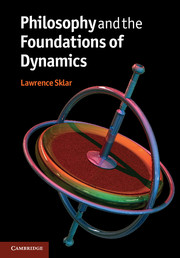Book contents
- Frontmatter
- Contents
- Chapter 1 Introduction
- Chapter 2 The pre-history of classical dynamics
- Chapter 3 The astronomical revolution
- Chapter 4 Precursors to Newtonian dynamics
- Chapter 5 The Newtonian synthesis
- Chapter 6 Philosophical aspects of the Newtonian synthesis
- Chapter 7 The history of statics
- Chapter 8 The development of dynamics after Newton
- Chapter 9 The “Newtonian” approach after Newton
- Chapter 10 From virtual work to Lagrange's equation
- Chapter 11 Extremal principles
- Chapter 12 Some philosophical reflections on explanation and theory
- Chapter 13 Conservation principles
- Chapter 14 Hamilton's equations
- Chapter 15 Canonical transformations, optical analogies and algebraic structures
- Chapter 16 The search for new foundations
- Chapter 17 New directions in the applications of dynamics
- Chapter 18 Spacetime formulations of Newtonian dynamics
- Chapter 19 Formalization: mass and force
- Chapter 20 Relationist dynamics
- Chapter 21 Modes of explanation
- Chapter 22 Retrospective and conclusions
- References
- Index
Chapter 21 - Modes of explanation
Published online by Cambridge University Press: 05 December 2012
- Frontmatter
- Contents
- Chapter 1 Introduction
- Chapter 2 The pre-history of classical dynamics
- Chapter 3 The astronomical revolution
- Chapter 4 Precursors to Newtonian dynamics
- Chapter 5 The Newtonian synthesis
- Chapter 6 Philosophical aspects of the Newtonian synthesis
- Chapter 7 The history of statics
- Chapter 8 The development of dynamics after Newton
- Chapter 9 The “Newtonian” approach after Newton
- Chapter 10 From virtual work to Lagrange's equation
- Chapter 11 Extremal principles
- Chapter 12 Some philosophical reflections on explanation and theory
- Chapter 13 Conservation principles
- Chapter 14 Hamilton's equations
- Chapter 15 Canonical transformations, optical analogies and algebraic structures
- Chapter 16 The search for new foundations
- Chapter 17 New directions in the applications of dynamics
- Chapter 18 Spacetime formulations of Newtonian dynamics
- Chapter 19 Formalization: mass and force
- Chapter 20 Relationist dynamics
- Chapter 21 Modes of explanation
- Chapter 22 Retrospective and conclusions
- References
- Index
Summary
The variety of explanatory modes in dynamics
We have seen that dynamics is a theory with a multiplicity of explanatory structures that can be used to formulate its lawlike conclusions and to provide explanations of the behavior of systems within its purview. We have also seen that the threads of some of these structures can be traced back to the earliest days of the development of the theory.
One pattern of explanation in dynamics we might call the “Newtonian.” Here one must first posit an appropriate structure that admits a preferred metric of time and the existence of the preferred inertial reference frames to which all motion is to be referred. Inertial motion with constant speed and direction is taken as the “natural,” “unforced,” state of a body.
Inertial mass and force are introduced. The former is an intrinsic property of a piece of matter representing its resistance to having its state of motion changed, and the latter is the (vector) measure of the influences that can change the state of motion of a system. The fundamental law, of course, is the proportionality of the linear momentum change of the system to the force applied to it. This initial Newtonian framework must be supplemented, as was first seen by Euler, by a corresponding notion of moment of inertia as intrinsic resistance to change of state of rotation and of moments of forces (or torques) as the measure of the influences generating changes of angular momentum.
- Type
- Chapter
- Information
- Philosophy and the Foundations of Dynamics , pp. 245 - 260Publisher: Cambridge University PressPrint publication year: 2012



